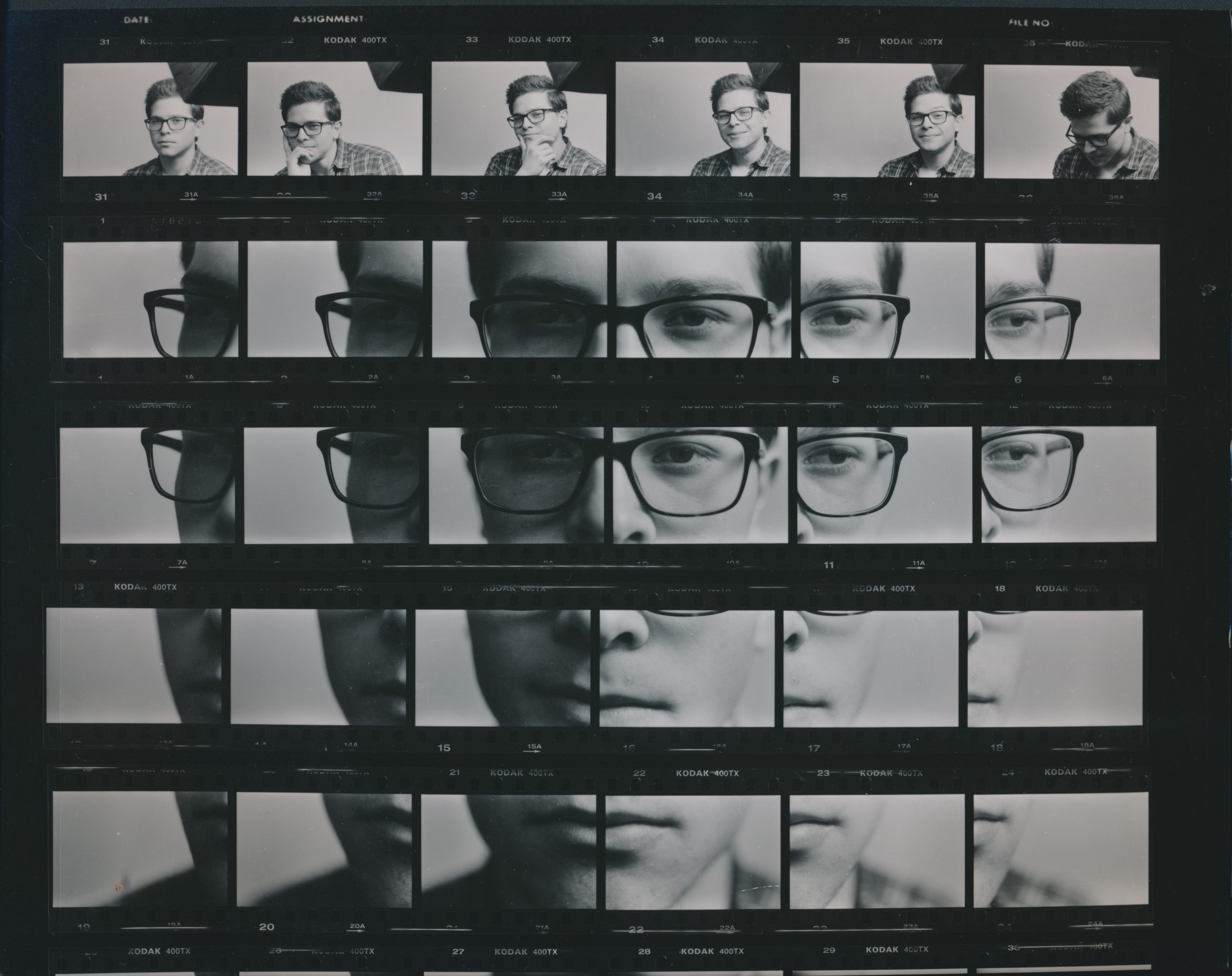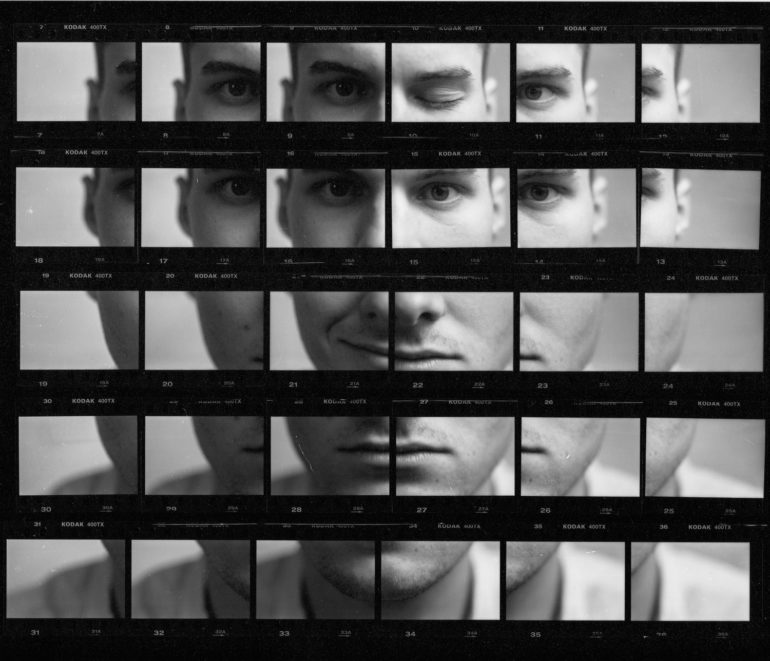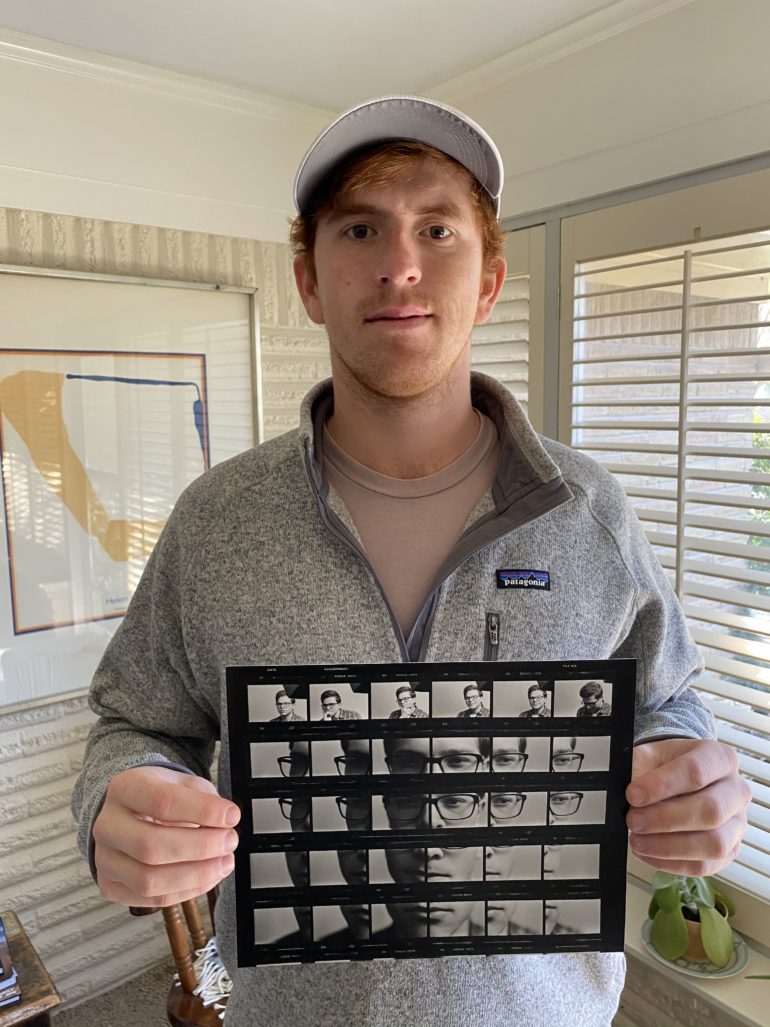Last Updated on 03/12/2020 by Mark Beckenbach
Cameron Mosier painstakingly worked with Kodak Tri-X to create a beautiful portrait.
“I like the look of seeing the numbers from the film and the entire strip because it brings more depth to the image,” relates photographer Cameron Mosier about his unique portrait shot on film. “A fun thing about the image is the imperfections.” What Cameron tried isn’t new per se, but it’s always fun to see projects like this. They’re intensive and require the photographer to really think ahead to the production stage. The idea is similar to the Brenizer method, which applies this idea more to the digital world but also gets rid of the imperfections that make these photos really special.
Phoblographer: Tell us about the creative inspiration for this photo. What made you want to do it? I understand it’s a series of pictures and a contact sheet, but why?
Cameron: I saw a grid portrait shot in a black and white film magazine where the artist shot 4×5 black and white images and stitched them together. That was back in college, and I cannot find any of his work now. I only had a 35mm film camera, and I did my own take on what he made, which was using an entire roll of film to make one picture.
Phoblographer: Why choose film rather than the current trend of Instax?
Cameron: I came up with this idea 7 years ago in college, and Instax was probably just getting popular, but I didn’t have one. I have one now, but I think I like the look of seeing the numbers from the film and the entire strip because it brings more depth to the image.
Phoblographer: Talk about how you actually went about doing this. I’m assuming that the lighting and exposures were entirely consistent, and you basically just moved the camera around, right? Or it could be much more intensive than that!
Cameron: It really isn’t much more intensive than that. It was putting my camera on a tripod and taking pictures in sequence as if you were reading from left to right. Doing that allowed the numbers on the film to line up. I have made a few more of these, and I made the mistake of snaking around the subject’s face (doing an S motion instead of reading motion), and I had to cut up the film to make it line up, which was a big pain.
Phoblographer: Why Tri-X? Why not Portra or something?
Cameron: I honestly don’t know how to develop and process color film. I just haven’t dedicated the time to learn the extra steps. And, the intention was for me to go to the darkroom and enlarge a physical copy. I had no intention of digitizing it. I probably would try color film on my next go and digitize it instead. A fun thing about the image is the imperfections. I actually wasn’t happy with the way this turned out because when I was processing the film there was a light leak or I didn’t put the film on the spool correctly and some of the images came out with an overexposed section. If you look closely at the middle row of the image you can see at the bottom what I am talking about.
Phoblographer: Creatively speaking, how are you expressing yourself here? Getting the subject to stay completely still for that long must’ve been super difficult.
Cameron: I don’t know if I am expressing myself as much as I just wanted to try something different and see how it turned out. I guess I like the idea of thinking outside the box and I want people to understand that from this image.
Phoblographer: Tell us a bit more about the gear. You used a Canon EOS 1V, Tri-X, and what lens? What lighting? How was the processing and scanning done?
Cameron: I chose the Canon 1V because it was compatible with all the new Canon lenses I already have for my video production business. And I used a white paper backdrop with a single LED light that had a softbox. Really simple setup actually. As for the processing and scanning…I did all that in the darkroom and then I took my contact sheet and scanned it with my Canon 9000f mark ii.
Phoblographer: Talk to us about you as a creative photographer.
Cameron: I own a video production company called Tribal Video so I am around cameras a lot. My way of not getting tired of the camera is to use photography as my creative outlet and not sell it as a service. I prefer making a living with video and using photography as a fun activity I do with my friends when we go on trips or doing something like the grid portrait.




